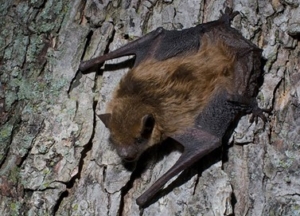One of the most widely known viruses that have threatened pets and their humans alike has lost some of its infamy in recent years.
At one time, rabies was prevalent enough in North America to play the evil impetus in a Disney movie, known as Old Yeller. That movie is over sixty years old now, and entire generations of pet owners might have missed out on the notoriously sad story of a boy and his dog.
 Spoiler ahead! Old Yeller is the titular good boy, who heroically saves his family from wild boars, angry bears and rabid wolves, and endears himself to all by being a glutton for food. In a tragic turn of fate however, the invincible dog succumbs to an infected wolf bite and the duty falls to his young master to put him down. Parents teared up at this part, but kids had nightmares for weeks.
Spoiler ahead! Old Yeller is the titular good boy, who heroically saves his family from wild boars, angry bears and rabid wolves, and endears himself to all by being a glutton for food. In a tragic turn of fate however, the invincible dog succumbs to an infected wolf bite and the duty falls to his young master to put him down. Parents teared up at this part, but kids had nightmares for weeks.
This sort of story might be a little melodramatic by today’s standards, but it helped spread awareness about rabies (or “hydrophobia” as it was known) across America. Our modern pets are relatively safe from this killer virus, but only by maintaining vaccination protocols and spreading wildlife safety awareness will that stay the case.
Today we will explore the prevalence of rabies as a threat to us and our pets in Canada.
Zoonosis: from pets to people
Most of the illnesses that our pets come down with are not something we can catch from them. Counter to the recent paranoia of ‘dog flu’, many viruses that reside in animals cannot be transmitted to humans. This is NOT true of rabies though. Rabies is categorized as a zoonotic disease, which means that it can infect different animal species and spread to humans as well.
Furthermore, there is NO CURE for rabies. Once symptoms of the virus are shown, death is almost certain for human and animal patients alike.
For this reason, post-exposure treatment must be administered as soon as possible when there is even a chance of infection. According to the World Health Organization, over 15 million people worldwide were given post exposure treatment last year, with children being the most at risk to succumb to the illness. This involves a regimen of shots administered first around the infection site, and then given intramuscularly over the course of two weeks with blood testing to check for immune response.
A lousy experience for a person to go through, but at the least there is an effective treatment if caught early enough. For cats and dogs the reality is much grimmer. If they are suspected to be infected, they cannot be trusted to not spread the virus during recovery. Some owners might attempt to provide supportive treatment for months in strict quarantine, but often times the risk to human health is too high and the animal is euthanized.
So how does one get rabies? In almost 99% of human cases, the cause is a bite from an infected dog. For this reason, herd immunity in our canine friends doesn’t just keep them safe, but it protects us too.
Pre-exposure inoculation for adult humans is available but not commonplace. It is much more costly to administer vaccines to people and requires three initial shots and then boosters every two years. Pre-exposure vaccinations for pets are relatively affordable, and once they are administered for a puppy at three months of age, they are protected for a year, and then only need boosting every three years thereafter.
Wild Risk: keeping a distance
Preventive vaccinations in North America have been so successful in fact, that only a handful of pets are affected by rabies every year. In Canada, the reservoir for infection is no longer dogs, but the wildlife populations of certain species. Across the nation, this includes raccoons, skunks and foxes as some of the most at-risk species, but that differs in every province and natural environments.
In our home province of British Columbia for instance, the only confirmed wild carrier of rabies are bat species. Just last year, seven bats that came into human or pet contact were collected and tested positive for rabies. This doesn’t mean we should be fearful or destructive towards bats and their habitats, but we do need to exercise caution when we know they are around.

Little Brown Myotis, by Toronto Zoo, Native Bat Conservation Program
The Little Brown Bat for example, is a common sight in backyards on summer nights. Healthy bats are active at night and fly between treetops to hunt insects.
If you find a bat on the ground, it could be sick and succumbing to an ailment, or it might just be a young or tired bat that just needs some help back into the closest tree. In either case, visibly healthy or sick, bats can be carriers for the rabies virus and you should call your local wildlife authority to get advice or help.
NEVER attempt to touch a bat with your bare hands. If any skin contact is made with one of these critters, the risk for possible infection is present (even if they did not bite). The bat must then be collected for diagnostic testing, which unfortunately means it will have to be euthanized.
When it comes to our pets and wild bats, cats are particularly inclined to come into risky contact. Whether they are outdoor roamers or just restricted to the backyard on nice days, cats are experts at finding sleeping or grounded animals and are very likely to initiate contact with a bat.
 To summarize, there is a case to be made for vaccinating dogs and cats alike to prevent rabies transmission. Worldwide, dogs are still the most common culprits of spreading the virus to humans, and the undeniable hunting instinct of our cats makes them more likely to seek out wildlife.
To summarize, there is a case to be made for vaccinating dogs and cats alike to prevent rabies transmission. Worldwide, dogs are still the most common culprits of spreading the virus to humans, and the undeniable hunting instinct of our cats makes them more likely to seek out wildlife.






